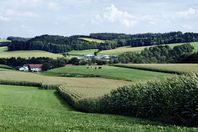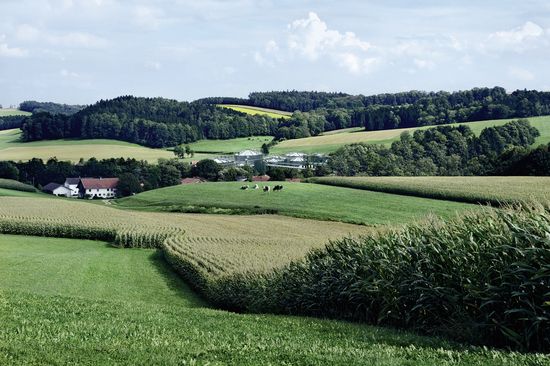Asia
EMEA

LANXESS Canada Contacts
Contact our Sites in Canada
Media Inquiries
General Inquiries
Please click here to e-mail LANXESS Canada with product inquiries and general requests.
Global Press Releases
2012-05-04
Highly effective, easy to meter and absolutely sustainable
Innovative iron oxide for desulfurizing biogas
Specialty chemicals company LANXESS has developed Bayoxide E 16, a highly effective synthetic iron oxide for reducing hydrogen sulfide in biogas that can be added directly to the fermentation reactor. “Our new product is a cost-efficient alternative to conventional desulfurization processes, such as the use of activated carbon. Bayoxide E 16 already removes much of the hydrogen sulfide in the fermentation reactor, and is very effective on account of its nearly 100 % purity. In contrast to comparable products, a metering system is unnecessary, meaning Bayoxide E 16 is very simple to use,” explains Gregor Hermanns, technical oxides expert in the LANXESS Inorganic Pigments business unit.
Strong growth in biogas facilities
Biogas is a trend today because it is an ecological, resource-conserving and climate-neutral energy source. In Germany alone, the number of biogas plants has increased by a factor of 10 over the last 13 years. More than 7,000 plants with an installed power output of nearly 3,000 megawatts contributed to the energy supply in 2011.
In a biogas plant, organic substances are decomposed and fermented under anaerobic conditions, meaning in the absence of oxygen. The systems process crops, liquid waste from livestock such as slurry, agroindustrial residues and biowaste from commercial businesses and households. Fermentation produces a gas comprised chiefly of methane, which in most cases is used directly on site to drive a generator. Depending on the starting materials, biogas contains fluctuating levels of hydrogen sulfide, on an average of about 500 milligrams per cubic meter. The hydrogen sulfide must be removed from the gas because of its toxicity, odor and, above all, the corrosive effect of the sulfur compounds on the fermentation reactor and generator. Furthermore, without desulfurization, the formaldehyde limit values would be exceeded on account of the inactivation of the exhaust gas catalytic converter.
Meets German fertilizer regulations
Bayoxide E 16 reacts with hydrogen sulfide to form iron sulfide and sulfur, which as substances occurring naturally in soil can be used to fertilize fields, together with the fermentation residue. “It has a high active ingredient content and fulfills the strict requirements of the German fertilizer regulations,” Hermanns explains. Because the product is added in its unopened sack, metering is simple and dust-free.
Advantages of use
Using the new Bayoxide E 16 product offers numerous advantages. For instance, it helps to avoid the corrosion damage often caused by sulfuric acid formation, which otherwise occurs if the common method of supplying air is used to remove the hydrogen sulfide. What is more, no danger exists of explosive mixtures of methane and atmospheric oxygen forming due to the incorrect addition of too much product.
Iron oxide is neither a hazardous material nor a water contaminant, and it can be handled using simple equipment and without expensive metering systems. A plant sustains no corrosion damage. The product requires no special storage and personnel need not be trained in accordance with the German Ordinance on Dangerous Goods.
Bayoxide E 16 removes hydrogen sulfide in the fermentation reactor so effectively that the resulting biogas in most cases can be used directly. When it comes to injection into the public grid, the residual hydrogen sulfide content is already so low that the cost of secondary biogas desulfurization, e.g. by activated carbon gas treatment, is significantly reduced.
The Inorganic Pigments business unit belongs to LANXESS’ Performance Chemicals segment, which achieved total sales in fiscal 2011 of EUR 2.13 billion.
LANXESS is a leading specialty chemicals company with sales of EUR 8.8 billion in 2011 and currently around 16,500 employees in 30 countries. The company is at present represented at 48 production sites worldwide. The core business of LANXESS is the development, manufacturing and marketing of plastics, rubber, intermediates and specialty chemicals. LANXESS is a member of the leading sustainable indices Dow Jones Sustainability Index (DJSI) World and FTSE4Good.
- Gallery




